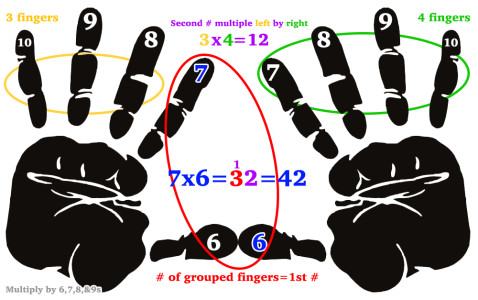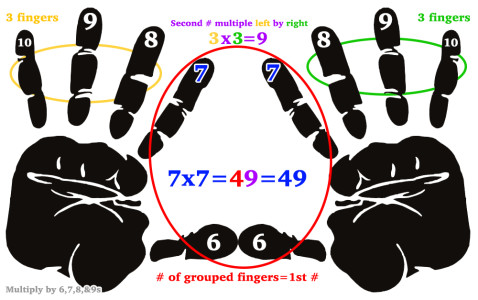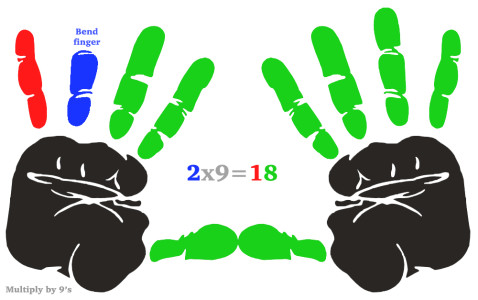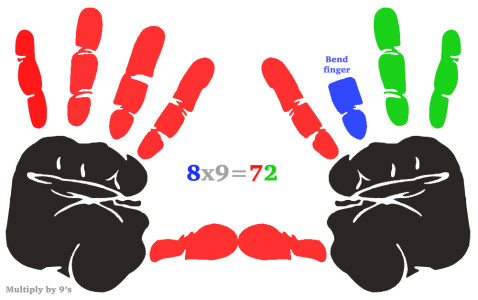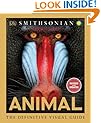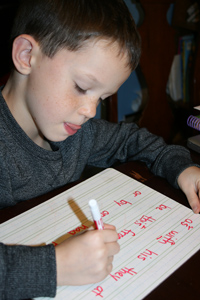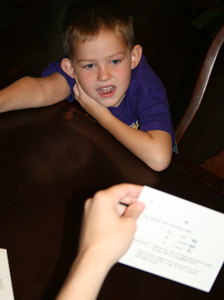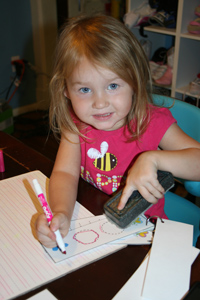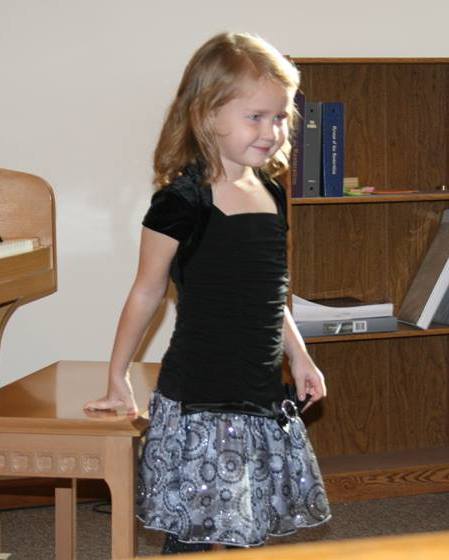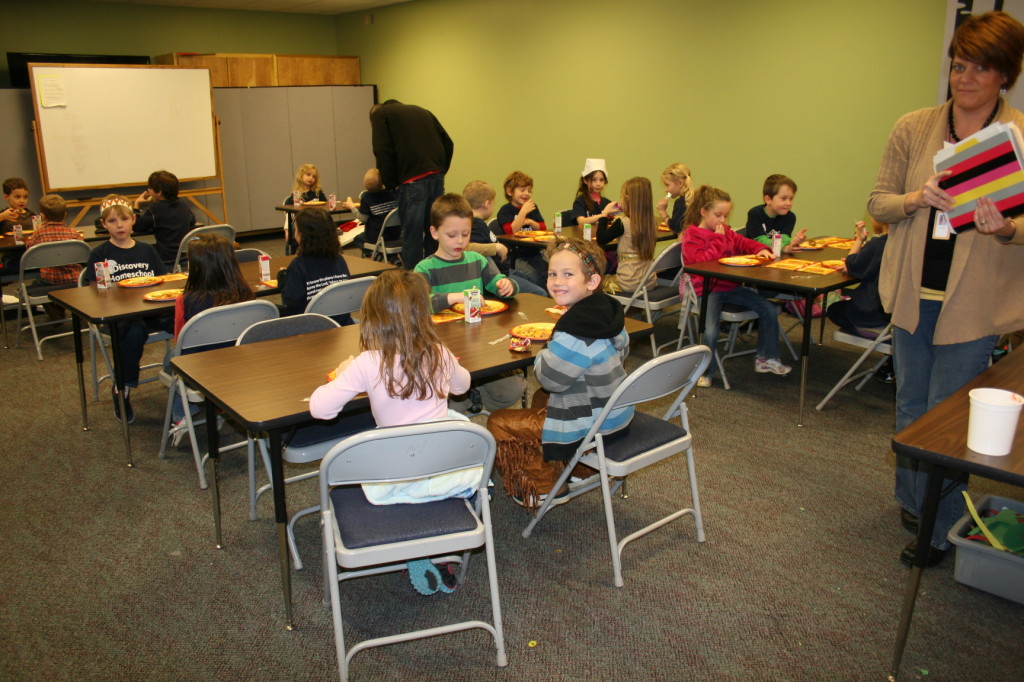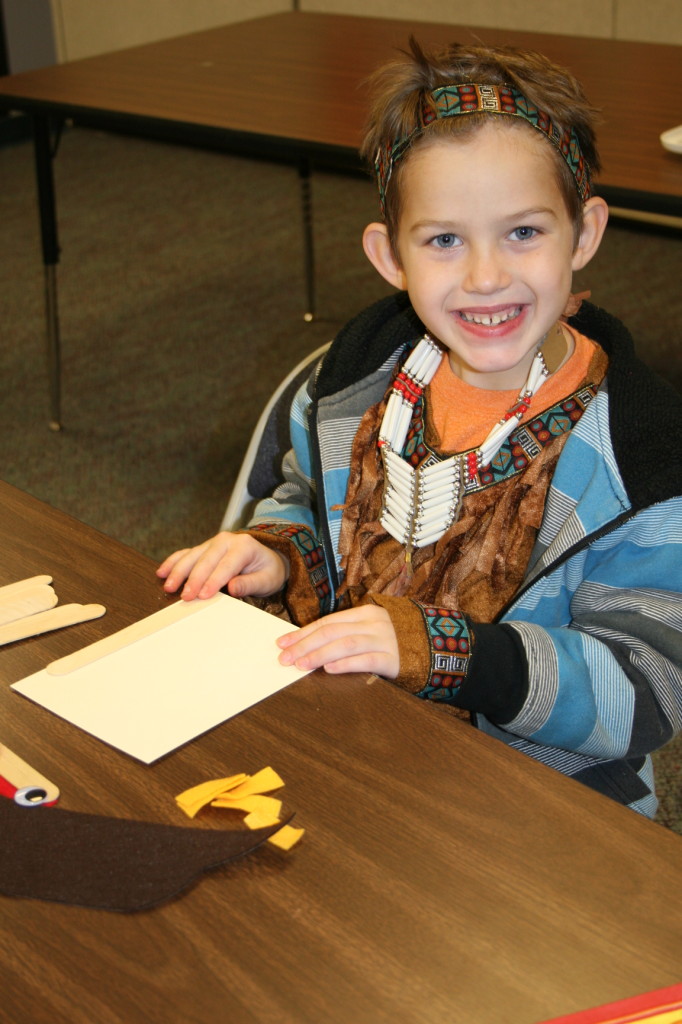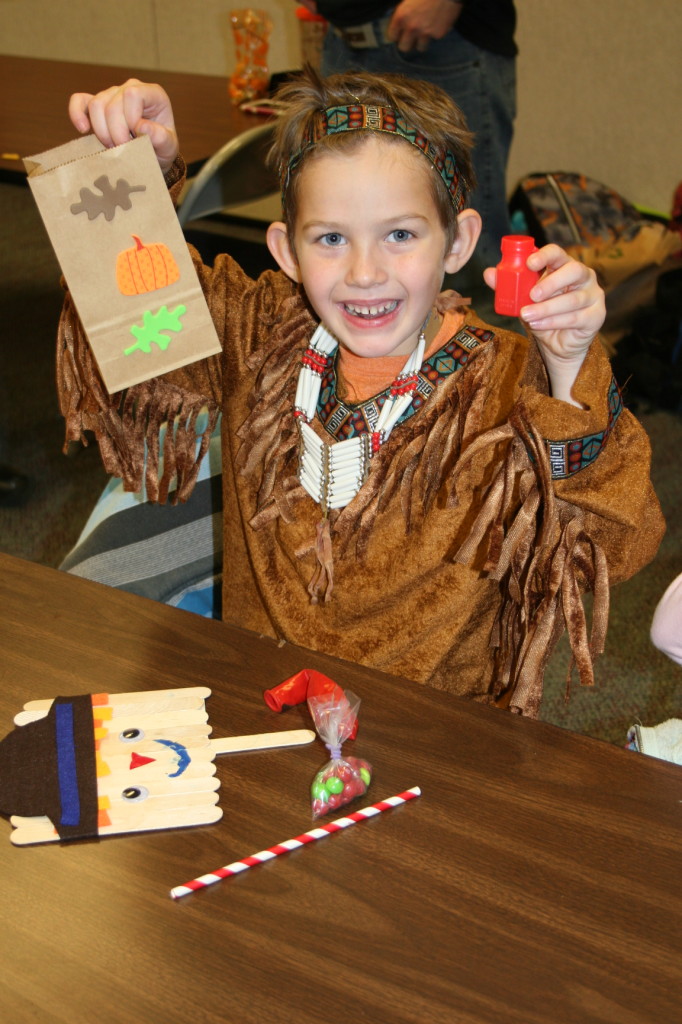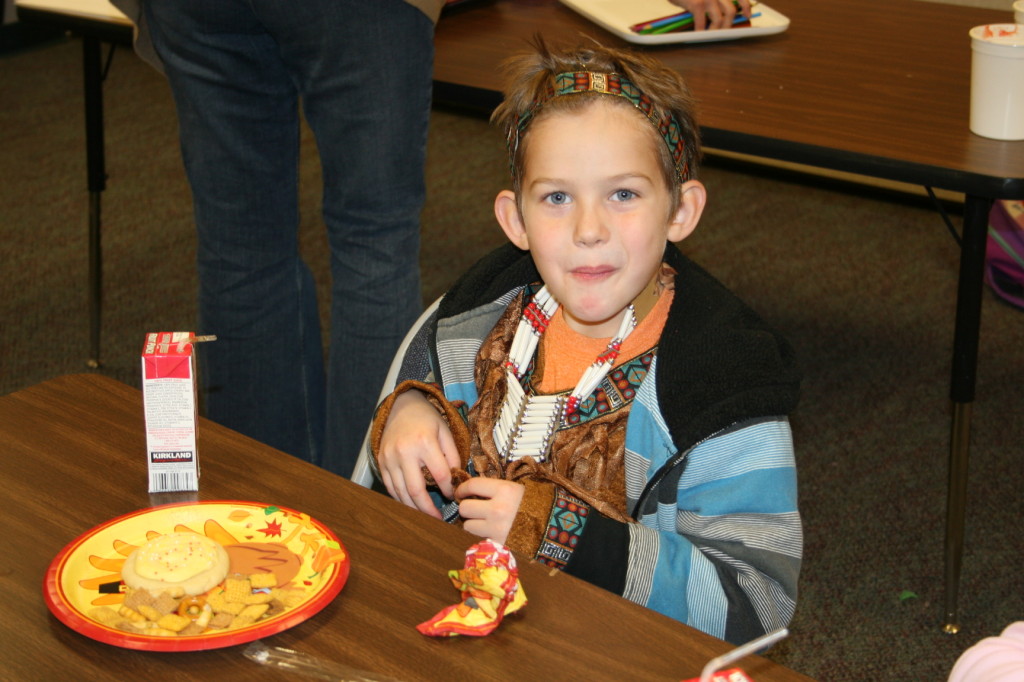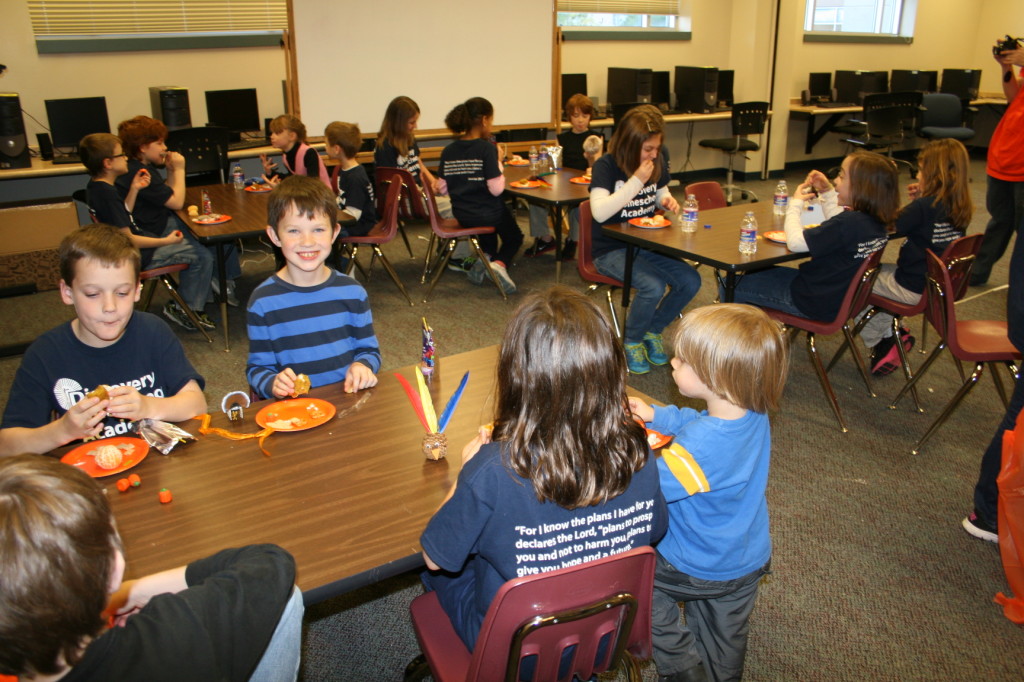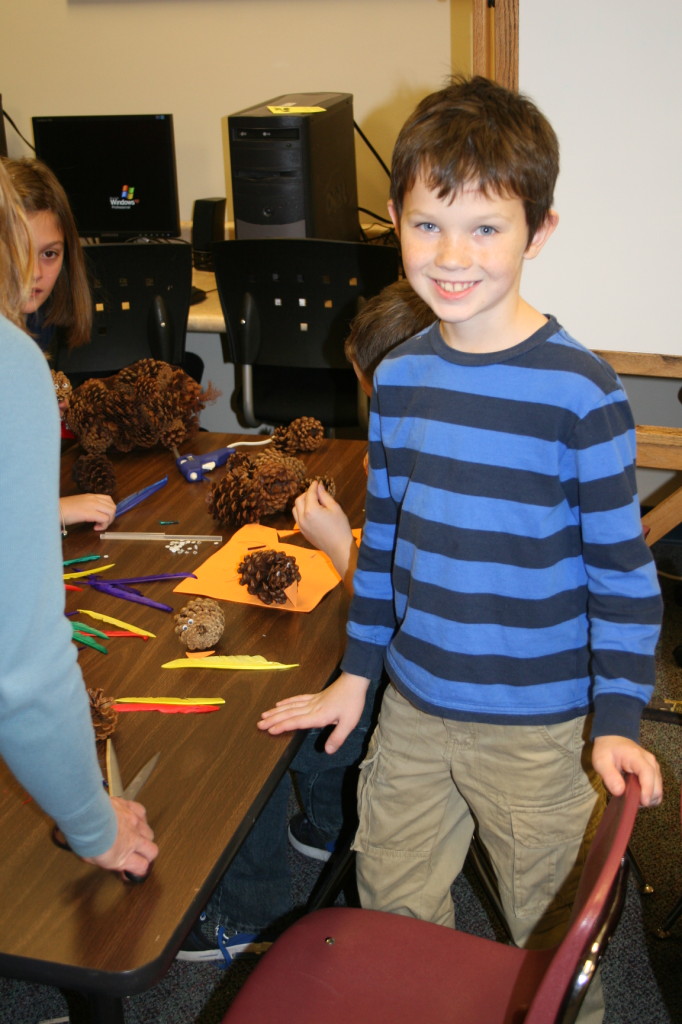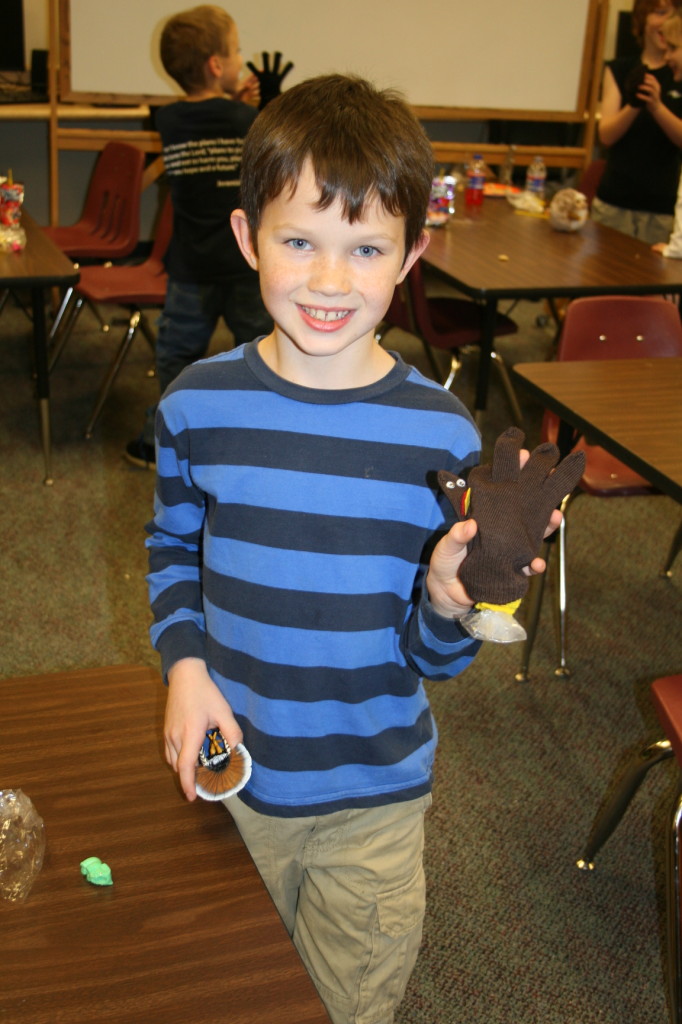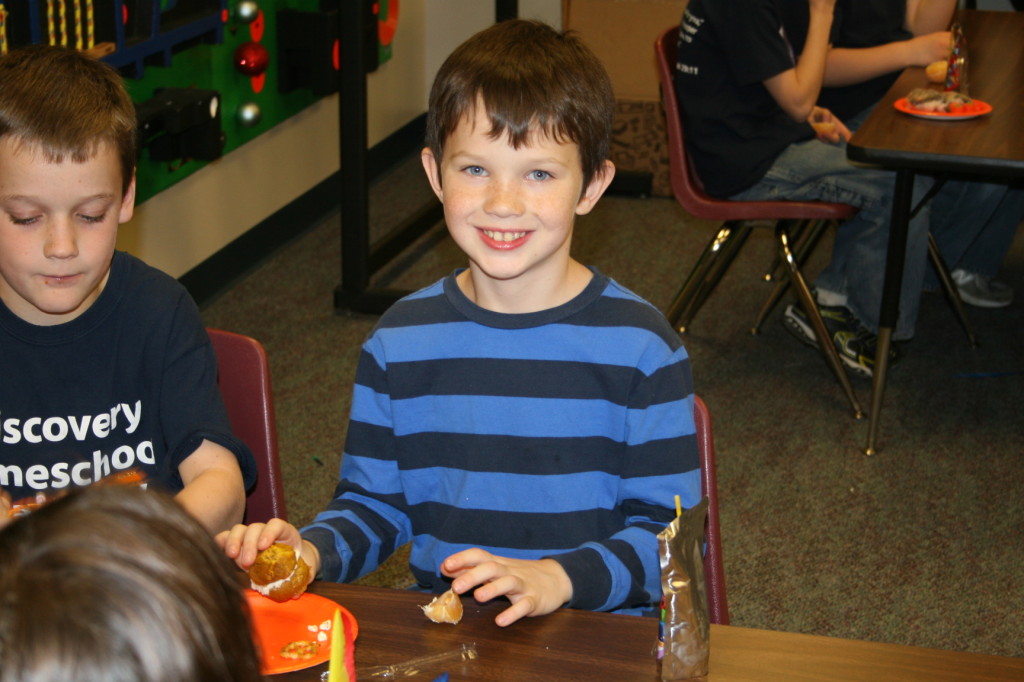Paul Harvey’s predictions from 1965 were spot on. Even Snopes verifies this as true.
Category Archives: Classical Education
Multiplication Tricks
Getting back into the school year we have to review our multiplication facts. Some are just harder to remember than others. My oldest son has most of the hard ones memorized by tricks that he learned from his Math-U-See video instructor. Things like: I ate(8) and I ate(8) and that’s what I got sick(6) for(4). Or he’s memorized rhymes that I taught him: six times six is thirty-six. But there are facts like 6×7 and 7×7 that didn’t have any tricks or rhymes until we discovered them today. They are a little more complicated so we’ll see how he does with them in the long run. Also mastering the x3 and x4 facts are key to success. Below I listed our tips and tricks for getting the multiplication table mastered. We also use xtramath.org for doing math drills with addition, subtraction, multiplication, and soon division too. Here’s a link to a 1-10 times table chart and for the multiplication chart 1-100.
- 1’s- anything times one, is itself
- 2’s- doubles, skip count
- Skip count by 3’s, once they have them memorized go faster
- Then in order learn the x3 facts, once mastered go faster, then master them out of order
- Skip count by 4’s, once they have them memorized go faster
- Then in order learn the x4 facts, once mastered go faster, then master them out of order
- 5’s- skip count by five
- 6×6=36 Rhyme: six times six is thirty six
- 6×7=42 or 7×6=42 Hand trick, see below
- 7×7=49 Hand trick, see below
- 6×8=48 or 8×6=48 Rhyme: six times eight is forty eight
- 7×8=56 or 8×7=56 5,6,7,8 -> 56=7×8
- 8×8=64 I ate(8) and I ate(8) and that’s what I got sick(6) for(4)
- 9’s- lay down the finger you are multiplying by nine, see below
- 10’s- anything times ten is itself and add a zero
2014-2015 Curriculum
We attended the Midwest Parent Educators conference and curriculum expo this past spring and got all our supplies and curriculum for next school year. We purchase mostly from Rainbow Resource because they have the lowest prices but we got some things like our Math-U-See program direct from their booth at a show discount. It’s a great place to look at the different curriculum that are successful on the market. We are all set to go and we are spending any down time this summer finishing up the last few chapters in our 2012-2013 curriculum.
Zavien, 4th Grade
- Grammar: First Language Lessons III this is a short lesson that uses repetition in a constructive and non-monotonous way. We’ve both enjoyed it and he retains it.
- Writing: Writing with Ease III… this is also a short lesson but you have to be engaged the whole lesson to make sure the child is writing correctly. This is when I’m the most strict with writing. For cursive we are using Classical Conversations Prescripts work books.
- Spelling: Phonics for Reading & Spelling (spelling)… this is a good program and works best with consistency. We use an iPad app to study our spelling list each week which has worked really well.
- Literature: Classical House of Learning/Grammar Stage/ my son loves to be read to and to draw. This is a great program that ties into our history lesson too.
- Reading: McGuffey Readers… great classic curriculum to reinforce reading skills. Christian Lighthouse Education Reading (readers and workbook)… I really like these readers as it teaches good character along with reading. I got the workbooks to help with comprehension but it’s been less about comprehension and more about reading skills. After a section of these readers my son has to spend the rest of his 1 hour of reading in elective books. He reads Magic Tree House, the Geronimo Mouse series, the Dragon Keeper’s series, and he just got the Hardy Boy’s.
- Poetry: The boys memorize one poem at a time and then I record them reciting it. They practice the poem everyday until they have it mastered. We choose our poems from The Random House Book of Poetry.
- Latin: We started Prima Latin from Classical Conversations this year and it’s going well so far.
- Math: Math-U-See Delta we love this program and the boys really thrived on it last year. It’s a very hands on program and teaches in sequence.
- History: Story of the World III… this is a great program that my son loves to listen to. He will sit and listen to the audio while coloring and I will ask him the workbook questions to make sure he was listening. Then we do map work and take the test. We don’t get into the projects much due to time but we try to do some of the literature suggestions and encyclopedia reading.
- Science: Geography… We are exploring geography this year.
- Religion: Bible Stories… we read a chapter at bedtime and it’s been great for all of us. Mom included. Getting through the Old Testament is easy with these Children’s Bible Stories.
- Art & Art History: the children attend DHA and Zion’s Compass Co-op where they have 1 hour lessons each week that cover different subjects in art and art history.
- Music & Music History: Piano Lessons… we take lessons with Michelle Sherer and it’s been great. It’s so fun to see them at their recitals. Voice Lessons… we take lessons with Havilah Bruder and we saw a drastic improvement in our older son’s singing in church.
He also will be doing soccer in the fall & spring, DHA 1 day a week, Zion’s Compass Co-op 1 morning each week.
Jaxon, 2nd Grade
- Grammar: First Language Lessons II
- Writing: Writing with Ease II
- Spelling: Phonics for Reading & Spelling (phonograms, writing, & spelling)
- Literature: Classical House of Learning/Grammar Stage
- Reading: McGuffey Readers & Christian Lighthouse Education Reading(readers)
- Poetry: The Random House Book of Poetry
- Math: Math-U-See Gamma
- History: Story of the World III
- Science: Geography
- Religion: Bible Stories
- Music: Piano lessons, Guitar lessons
He also will be doing soccer in the fall & spring, DHA 1 day a week, Zion’s Compass Co-op 1 morning each week, and horse back riding lessons once a week.
Tylea, Kindergarten
- Reading: Phonogram cards, Discover the Code series
- Math: Math-U-See Alpha
- Writing: learning her circle space as she masters her phonics
- Enrichment: Busy Bags!
- Music: Piano lessons
She also will be doing soccer in the fall, ballet after the new year, DHA 1 day a week, Zion’s Compass Co-op 1 morning each week, and Handmaidens(think Christian girl scouts).
Vaylee, Toddlerdom
- Busy Bags! We have like 50 different busy bags that I can turn to and entertain my little one. I love it!
——————————————–
- DK Smithsonian, Animal, The Definitive Visual Guide
- 1828 American Dictionary of the English Language
- History of the World(White Cover)
- The Random House Book of Poetry
Weekly Enrichment Program: Discovery Homeschool Academy(DHA)- homeschool enrichment one day a week. All the fun classes that you liked in public school: PE, Art, Music, Spanish, Science, Social Studies. We have class parties, field day, grandparents day, field trips and other fun activities with the fellowship of other homeschool families. They also have homeschool 101 classes for parents that were great.
Homeschool Co-op: Zion’s Compass Homeschool Co-op- one morning each week we join other families and share teaching! This year the subjects are Music, Art, Science, and History. The parents take turns to teach each of the subjects each week. It’s been fabulous and the children makes friends and enjoy experiences together.
Homeschool Support: I really enjoy The Well Trained Mind forum online and the book has been so helpful in navigating available curriculum. Once a month I am attending the Zion’s Compass Parent Night, which has guest speakers to help in different areas that appeal to homeschooling parents.
Resurrection Eggs
The story of Christ’s sacrifice is a story told all year long. At Easter time the story has an even more special meaning. At this time of year while we focus on friends, family, and festivities it’s important to take time to stop and remember what Christ went through for us. It’s time to solidify all the details of his journey for our children. To remind them that Jesus was sent to save them from their sins. To remind them how much he loved us and what he was willing to do to protect us.
At our house we read Benjamin’s Box and we use Resurrection Eggs to remind our children of the details of Christ’s sacrifice. There are a dozen eggs and each has a token inside to remind us of a segment of Christ’s journey. Inside the first egg is a miniature toy donkey to represent Christ’s arrival into Jerusalem, the donkey symbolized him coming in peace. The second egg contains coins to represent the betrayal of the priests. The third egg holds a cup that reminds us of the last supper and sacrament. The fourth egg has praying hands to show the time Christ spent in the garden before he was taken by the Roman soldiers. The fifth egg contains a leather strip in remembrance of how he was beaten. The sixth egg holds a crown of thorns. The seventh egg holds a cross of nails which if you push the tip into your palm will leave a red mark and helps child have a visual of the holes in Christ’s hands and feet. The eighth egg holds a die to symbolize the Roman soldiers gambling for Christ’s clothing. The ninth egg holds a spear as to the one that pierced Christ’s side. The tenth egg holds a piece of white cloth like what Jesus was wrapped in in death. The eleventh egg is a stone like the one that blocked Christ’s tomb. The twelfth egg is empty just as the tomb was empty on the third day because Christ lives!
Resurrection Eggs are a wonderful tangible way for children to understand the story of Christ’s sacrifice. Our little Vaylee, who just turned three, was able to comprehend parts of the story and sat and listen for the duration. Tylea, who is almost five, loved to hold each item and open the eggs to discover each treasure. The symbolism helped Jax, age seven, and Zavien, eight-and-a-half, remember the order of events and importance of each token. It was a fun and meaningful way to talk about the true meaning of Easter.
What is Common Core?
This is a good video for understanding what is going on in the United States in concerns with the Common Core educational goals, standards, and assessments. This will affect ALL of us. Rich or poor, vocational or educational, young and old, public and private. These are our children, our legacies. This concerns the fate of our future. It’s heartbreaking what is happening to our children. They are being defeated and beaten down on a daily basis. Their self esteem and self image is being obliterated by this set of standards and it’s implementation. These common core methods are literally damaging our children’s brain pathways and will cause life long damage. They don’t have a voice except for us- their guardians. Will you be silent while you watch them suffer at the hands of dysfunctional education system and a controlling federal government? Free our children, free our teachers, FREE EDUCATION! If we are an uneducated nation we will be easy to conquer and control. The United States of America as setup by our forefathers will cease to exist.
“Education is the key to unlock the golden door of freedom.”
-George Washington Carver
“Education is a better safeguard of liberty than a standing army.”
-Edward Everett
“Only the educated are free.”
-Epictetus
“Next in importance to freedom and justice is popular education, without which neither freedom nor justice can be permanently maintained.”
-James A. Garfield
“All men who have turned out worth anything have had the chief hand in their own education.”
— Sir Walter Scott
“Men had better be without education than be educated by their rulers.”
— Thomas Hodgskin
Common Core in the news:
Common Core as viewed by higher education:
1, 2, 3, 4 My Elementary Tour
1st Grade
First grade is really when homeschool gets rolling. You add a bunch of curriculum that you didn’t cover in kindergarten or preschool. You spend more time learning in each specific subject area. There is a lot of growing and stretching that happens this 1st grade year. It’s the transition year between fun kindergarten and the next 12 years of focused learning. Children are excited to be growing up but we have to be conscience as parents to encourage their curiosity and thirst for knowledge. Too much school can squash that thirst and it’s a fine line.
For us in 1st grade we add history, science, literature, spelling, grammar, memorization, art/music history, and some computer work. That’s in addition to the reading, writing, math, and piano that we established in kindergarten. It’s quite the adjustment for the child. For a first child they are usually excited to be learning new things. For a younger sibling they are big like their big brother/sister and get to do that work now! They’re excited!
Science, history, and literature are great stories that the child probably hasn’t heard before. The children are eager to hear these wonderful stories about new exciting things. The major growth with those subjects in 1st grade is that the child has to really hear the story and answer questions about what they heard. That’s a new skill that usually takes a couple months. For us, in history, I will have the child listen to the audio story several times. The first time they get to color the accompanying coloring sheet while they listen with headphones. When they can’t answer any questions then they listen again without coloring. If they still don’t know the answers, I will play the lesson out loud, and pause it after the answer to each question is given. By the middle of 1st grade the child has learned what is expected in the lesson and tries to pay close attention to find the answers the first time.
Grammar and memorization are new in 1st grade too. For example memorizing the definition of a noun, and poems about the days in the months. Children are actually very good at memorizing things and our grammar lessons are short and sweet and the repetition is just right. I also have my children pick out a poem to memorize in 1st grade. My oldest son picked The Crocodile by Lewis Carole. My second son has chosen A Visit by St. Nicolas by Clement Clarke Moore(he’s 1/4 through having it memorized and possibly regretting choosing such a long poem). We have them preform their chosen poem in front of family around the end of the school year.
Spelling is a natural progression from learning phonograms and beginning reading. We have a really long list of spelling words(with their rules explained) to complete over several years. We do 10 words at a time. We go over each word, and the sound each letter makes in that word. We review any spelling rules we come across and the child copies these into his note book. Next, I have uploaded a spelling app that allows custom spelling lists. It has a study test option which shows the words and plays my voice using the word in a sentence. It also has a word search and word scramble. There is a testing feature that has smiley hints. My children will review their spelling words in this app for several days until they feel confident to take their spelling test. My 3rd grader is moving through his spelling lists at a quick rate while my 1st grader takes his time. But that’s okay. We are working on spelling mastery not an extensive 1st grade vocabulary. Whichever words they miss on their spelling test I will add onto their next list of 10 words.
Also in addition to reading verbally with mom/dad, we start a required 30 minutes of independent reading. At first we called it silent reading so that the child understood the difference. But now we call it fun reading. It’s child’s choice of which books they would like to read at this time. But they have to choose out of a basket with books appropriate for their actual reading level, or they may look through books we got at the library that week, or follow along with an audio book.
For art/music history we try to include stories from artists and musicians from the past, pictures of their creations, or audios of their masterpieces. We visit museums, play classical music while doing math, we do art lessons from Artistic Pursuits, and watch Little Einsteins.
We do math drills on the computer at xtramath.org and that has been a nice intro to the number pad on the computer. The boys also do supervised google searches for special interest coloring pages. I have a typing program that I need to get setup on a desktop for them to use that I just haven’t gotten to yet. Typing will be part of my younger children’s 1st grade experience in the future.
| 1st, 2nd Grade Daily | ||
| Math 30mn | Grammar 15mn | Writing 15mn |
| Spelling 15mn | Verbal Reading 15mn | Req Reading 30mn |
| Piano 30mn | ||
| Weekly | ||
| Science 1.5hr/wk | History 1.5hr/wk | Literature 3hr/wk |
| Optional | ||
| Music History | Art History | Art/Crafts |
2nd, 3rd, & 4th Grades
We basically continue the above pattern through fourth grade. In 2nd or 3rd grade we will add cursive handwriting and latin. At what point in time we add it depends on the child’s level of development. I introduced cursive to my second grader last year and it was tears and just awful. So we only did that one lesson(and switched curriculum). By fall of this year it was easy peasy. He’s flown through his Cursive Without Tears book basically all by himself. We just purchased him a new cursive book of Bible verses that he’ll start next week. I’m looking forward to starting latin and I would have introduced it right after Christmas break but I’m waiting for the spring conference sale. At Mardel’s last week I decided I liked Prima Latin best so I will be picking that up on April 4th!
In 3rd grade the required reading time also increased from 30 minutes to one hour. That’s time that has to be spent reading chapter books of the child’s choice. I feel that it is imperative that these books be of interest to the child. If one series doesn’t work try a different one. Our son was intimidated by books without pictures so we started with the Geronimo series. It was goofy and about dinosaurs. Perfect for an 8 year-old-boy. He’s been reading through those at a faster and faster rate which is so exciting. This past Saturday we picked out a new Christian series that is from Odyssey that he’s interested in. He calls it a cross between Odyssey and Magic Tree House. I want all my children to have a love of literature. I strive to read to them daily and often change my voice for each character. I’m personally so grateful to my 3rd grade teacher for gifting me with a love of reading.
| 3rd, 4th Grade Daily | ||
| Math 30mn | Grammar 15mn | Writing 15mn |
| Spelling 15mn | Verbal Reading 30mn | Req Reading 1hr |
| Piano 30mn | Cursive 30mn | Latin 30mn |
| Weekly | ||
| Science 1.5hr/wk | History 1.5hr/wk | Literature 3hr/wk |
| Optional | ||
| Music History | Art History | Art/Crafts |
I haven’t taught 4th grade yet but that is our plan above. These first four years are called the “Grammar Stage,” in classical education. It’s when children are little sponges. These are the years in which the building blocks for all other learning are laid. Grades 5-8 are called the “Logic Stage,” is a time when the child begins to pay attention to cause and effect, to the relationships between different fields of knowledge relate, to the way facts fit together into a logical framework. And grades 9-12 are called the “Rhetoric Stage,” where a student learns to write and speak with force and originality. The student of rhetoric applies the rules of logic learned in middle school to the foundational information learned in the early grades and expresses his conclusions in clear, forceful, elegant language. At this point you also focus on special interests and training for the future. (Source)
Check out my curriculum post for this 2013-2014 school year for a full list of what we use. And here are links for information on how I teach preschool and kindergarten.
Balance, Step, Walk, Run-Kindergarten
When a toddler begins the process to walk he first starts by pulling himself up to standing and works on his balance. Next he holds onto something as he takes steps. Then he lets go of his support and takes his first step on his own. Next he’s walking and then running. It’s a process. Some children go from standing to walking quite quickly, while others take their time.
This process is the same with reading, writing, and arithmetic. You start with the basics and each child grows in their own time. So realize this before you start teaching your kindergartener. If your expectation is that you will be teaching and correcting your child’s basic reading and writing capabilities until 2nd, 3rd, and possibly 4th grade then it will be a happy surprise if they pick up on fluency earlier.
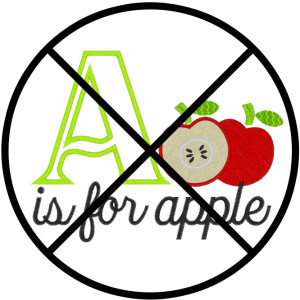 READING: First we start with phonics. We learn the 72 phonograms by sight WITHOUT visual aids. We have used audio aids on some of the harder ones. However, I’m not sure if that will hinder them in the long run. When you give a visual or audio aid when learning phonics then the child has to first remember the image or aid before they can deduce the basic sound(s). A is for apple, for instance. The child first has to remember Apple, then only one of the three sounds that A makes. So we don’t use any visual aids. They only look at a flashcard with the letter on it.
READING: First we start with phonics. We learn the 72 phonograms by sight WITHOUT visual aids. We have used audio aids on some of the harder ones. However, I’m not sure if that will hinder them in the long run. When you give a visual or audio aid when learning phonics then the child has to first remember the image or aid before they can deduce the basic sound(s). A is for apple, for instance. The child first has to remember Apple, then only one of the three sounds that A makes. So we don’t use any visual aids. They only look at a flashcard with the letter on it.
While our children can sing their alphabet at a very young age we do not introduce the letter names when we are doing phonograms. We call the letters by their phonetic sounds. So instead of calling A by it’s name, we call it by ă, ā, and ä. We call the letter O by it’s phonetic sounds of ŏ, ō, ŭ, and oo.
We introduce phonogram flashcards a few at a time until they are mastered. When the first four are memorized, we add a few more, while still reviewing all the ones we’ve mastered. We start this process in pre-k but we don’t accomplish all 74 basic phonograms until kindergarten usually. Every child is different and I’ve heard of children reading at age 3.
We introduce the first 26 phonograms in this order: o, c, a, d, f, g, s, qu, e, b, h, i, j, k, l, m, n, p, r, t, u, v, w, x, y, and z. Most letters only have one sound, six have two sounds, three have three sounds, and one has four sounds. So the first 26 phonograms have 41 different sounds in total.
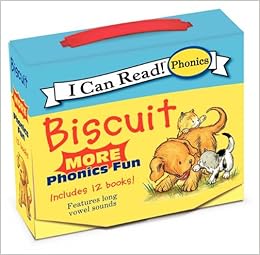 Once the first 26 phonograms are established we start phonics readers. We have the Biscuit Books set and the children really love it. After the Biscuit books we read through some Dick and Jane books, then we start McGuffey’s Pictorial Primer and the readers from Christian Light Publications. Our kindergartener also sits and flips through books or listens to audio books during their “silent reading” time.
Once the first 26 phonograms are established we start phonics readers. We have the Biscuit Books set and the children really love it. After the Biscuit books we read through some Dick and Jane books, then we start McGuffey’s Pictorial Primer and the readers from Christian Light Publications. Our kindergartener also sits and flips through books or listens to audio books during their “silent reading” time.
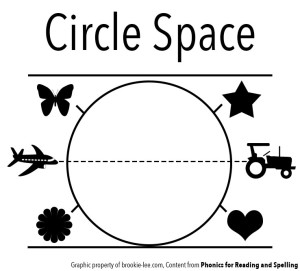
WRITING: Once the child has mastered how to read the first 26 phonograms we start on learning to write the letters. We learn to write in the same order that we learned to read. We use a curriculum called Phonics for Reading and Spelling. In it there are charts and one of them is called the Circle Space. We used the Circle Space and especially the star station in learning to write letters.
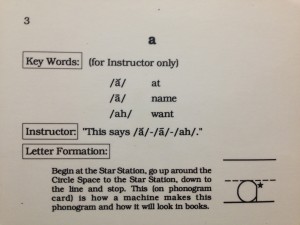 The curriculum flashcards can be purchased separately from the whole system. On the front of the card is the letter. And on the back of each card are instructions on how to say the sounds of the letter, sample words the sounds are in, and letter formation verbiage. To the right is a picture of the back of our flashcard for letter A. These are invaluable to me as a teacher and have made teaching to read and write simple without a lot of book work.
The curriculum flashcards can be purchased separately from the whole system. On the front of the card is the letter. And on the back of each card are instructions on how to say the sounds of the letter, sample words the sounds are in, and letter formation verbiage. To the right is a picture of the back of our flashcard for letter A. These are invaluable to me as a teacher and have made teaching to read and write simple without a lot of book work.
Using these stations has made explaining letter writing very simple. And there are names for each of the lines as well. It makes it fun and easy to learn the rules of penmanship. It also makes it very simple for me to correct letter formation in higher grades. I’m often telling my 1st grader not to let his letters touch the poison line.

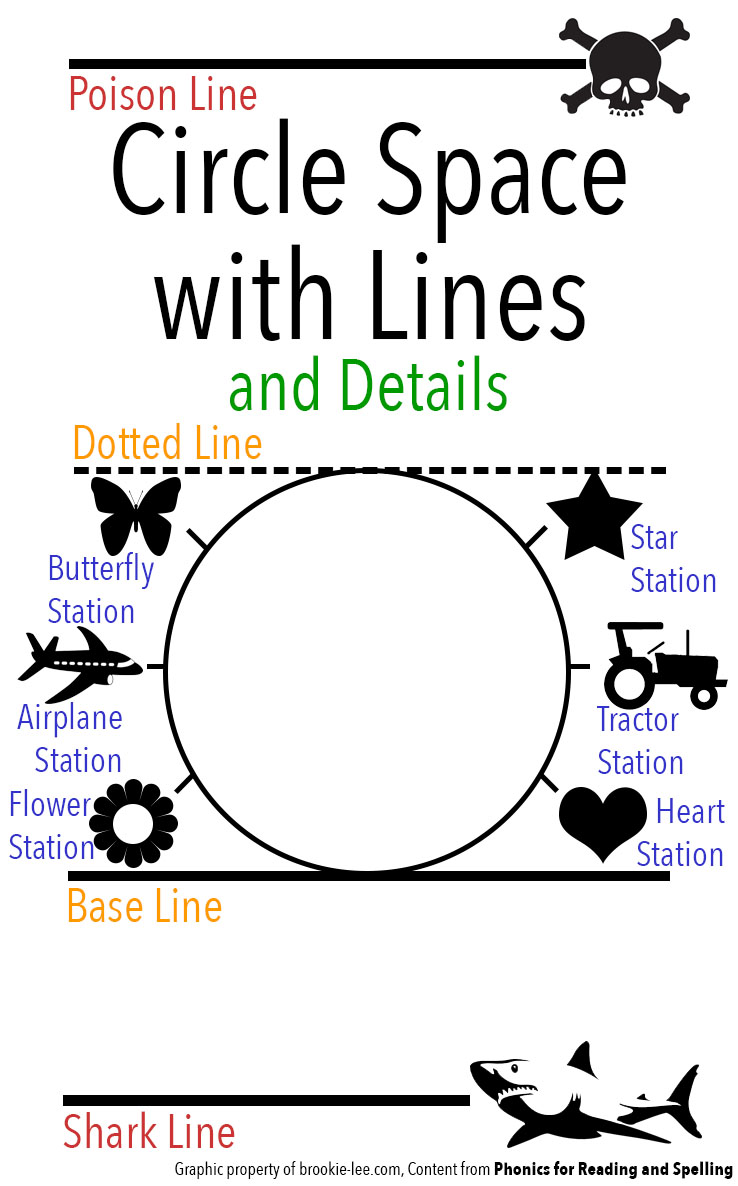
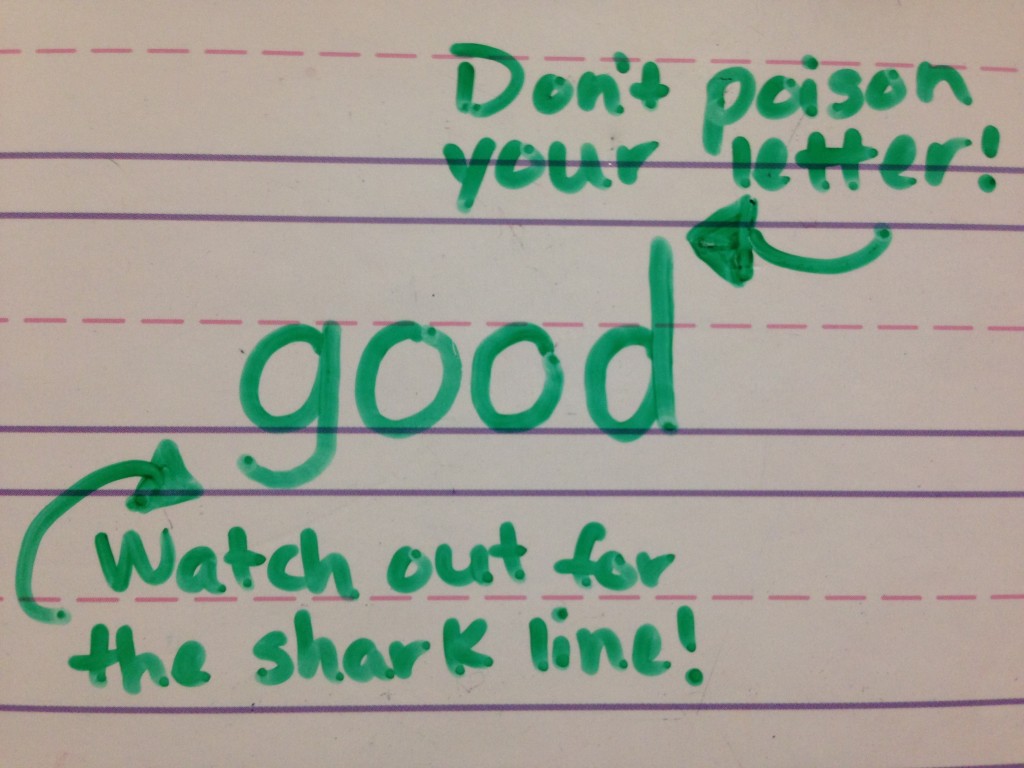
After learning how to write each letter, I continue using the line names and circle space stations in corrections as the children write. It’s very important in the beginning to watch them as they write during “writing time”. You do not allow them to form bad habits. You watch how they are holding their pencil, guide them as needed(watch out for the shark line), and erase and repeat if mistakes are made. I do not correct their penmanship in other subjects.
ARITHMETIC: We use Math-U-See and we all really like it. “Math-U-See is designed to teach students specific skills that build as the student progresses. This systematic and cumulative approach uses a definite, logical sequence of concept instruction. The Math-U-See system is structured with step-by-step procedures for introducing, reviewing, practicing, and mastering concepts. Each lesson teaches using multi-sensory tools such as videos, manipulatives, and other resources, designed to appeal to any type of learner.”
 At our house the child sits and watches the video. We do the first worksheet together to make sure instructions are understood and the concept is established. Then they do the rest of the worksheets on their own over a week. If they have questions they ask. I grade their worksheets each day and they have to go back and correct any mistakes. That helps me, as the teacher, catch if they are not understanding the concept since I’m working with several of my children while they are doing their math worksheets.
At our house the child sits and watches the video. We do the first worksheet together to make sure instructions are understood and the concept is established. Then they do the rest of the worksheets on their own over a week. If they have questions they ask. I grade their worksheets each day and they have to go back and correct any mistakes. That helps me, as the teacher, catch if they are not understanding the concept since I’m working with several of my children while they are doing their math worksheets.
MORE: We also do piano lessons, crafts, and my kindergartener is invited to sit into my older children’s history, science, and literature lessons and experiments/activities. One day a week they attend the Discovery Homeschool Academy and at the end of the year our little kindergartener has a graduation! He loved it!

| Kindergarten Daily | ||
| Math 30mn | Writing 15mn | Piano 30mn |
| Phonics 15mn | Verbal Reading 15mn | Req Reading 15mn |
| Optional | ||
| Science | History | Literature |
| Music History | Art History | Art/Crafts |
Check out my curriculum post for last 2012-2013 school year for a full list of what we used. And here are links for information on how I teach preschool and elementary.
Where to Start- Homeschooling a Preschooler
When my preschooler is ready to do school we start with our math primer book, tracing letters and numbers, learning phonograms, reading corner, and piano daily. We “do school” when she feels like it and only for as long as she feels like doing it at a time.  The rest of the day is spent imagining with toys, playing with playdoh, coloring, painting, playing with manipulatives, and yes sometimes watching movies. In the nice weather more time is spent playing outside. Occasionally she will join in projects with her older brothers. For example last week they all picked a bird they wanted to study and we did a project on that bird.
The rest of the day is spent imagining with toys, playing with playdoh, coloring, painting, playing with manipulatives, and yes sometimes watching movies. In the nice weather more time is spent playing outside. Occasionally she will join in projects with her older brothers. For example last week they all picked a bird they wanted to study and we did a project on that bird.
 MATH: For our math primer we use the curriculum from Math-U-See. In the past my boys used work books from Walmart that we were given. The lessons are short and simple. I do not stress how the child’s written numbers look at all. Their motor skills are not developed enough to force perfect writing at this stage. Playing with math manipulatives is always fun and helps teach patterns, sorting, and basic addition and subtraction.
MATH: For our math primer we use the curriculum from Math-U-See. In the past my boys used work books from Walmart that we were given. The lessons are short and simple. I do not stress how the child’s written numbers look at all. Their motor skills are not developed enough to force perfect writing at this stage. Playing with math manipulatives is always fun and helps teach patterns, sorting, and basic addition and subtraction.
WRITING: We use sheet protectors and plastic sleeves with print outs to practice tracing shapes, letters, and numbers with dry erase markers. My children have always enjoyed using dry erase markers. This helps them notice the shapes and get their hands use to creating the shapes. I do not expect them to write the numbers or letters from memory in preschool. Although Tylea has been writing her name on her own since right after her fourth birthday.

READING: We have a reading corner setup. It has a CD player with headphones and a little rocking chair. There are baskets with specific reading levels in each. There is also a box full of books with audio CDs. My preschooler is welcome to sit and listen or just flip through books anytime she would like.
PHONICS: I start introducing phonograms before preschool just to gage the child’s ability for retention. My daughter was not ready for phonics until her preschool year. So we have been working to memorize the phonograms. We haven’t gotten very far with her and that’s just her level. With my second son in preschool he picked up on the first 26 phonograms pretty quickly. He was competing with his older brother though and I think that pushed him to learn them quickly. My daughter doesn’t have that pressure so we are taking it slow and that’s ok. She does enjoy doing the first Explode the Code book, although I did not use this previously with my boys.
 SCIENCE: We go on hikes, we visit nearby parks, we have a pass to the Kansas City Zoo, we visit Powell Gardens(a botanical garden), we take camping trips to parks like Dinosaur Valley in Texas, spring 2014 we are going to the Creation Museum in Kentucky. We watch shows like Magic School Bus and the Discovery Channel. We bake together and talk about the weather pretty regularly. We also have a farm and lots of animal and plant science gets discovered.
SCIENCE: We go on hikes, we visit nearby parks, we have a pass to the Kansas City Zoo, we visit Powell Gardens(a botanical garden), we take camping trips to parks like Dinosaur Valley in Texas, spring 2014 we are going to the Creation Museum in Kentucky. We watch shows like Magic School Bus and the Discovery Channel. We bake together and talk about the weather pretty regularly. We also have a farm and lots of animal and plant science gets discovered.
BUSY BAGS: We have a box of busy bags that our preschooler will go through when she feels like it. She does it at her own pace and asks me questions as she goes. It’s pretty neat to watch her play and discover.
PIANO: My children start piano in preschool. It starts them getting use to practicing and rhythm. And they are adorable at piano recitals. My daughter was so tickled with herself after she played her piano piece at her first recital. It was adorable.
ARTS & CRAFTS: We are an artsy family and have lots of different supplies always available for creating. We paint often, color a lot, cut up things into tiny pieces for fun, and create seasonal crafts.

I’m writing a blog post on what we do in Kindergarten and how I teach my children to write their letters using a circle space and the star station. It’s worked really well for my two boys and I will start my daughter working with it in the fall, which will be her kindergarten year.
Check out my curriculum post for 2013-2014 school year for a full list of what we use. And here are links for information on how I teach kindergarten and elementary.
Zoology 1: Flying Creatures of the 5th Day
Oh Science, the bane of my homeschooling! Teaching science is not my thing. Math, history, literature, and art are all enjoyable and we do well at language arts although I wouldn’t call it enjoyable for me as a teacher. Seriously having a beginner reader read to you …..is…..so….boring! Granted you have many moments of gratification as you see them learning to read. Anyway we have been struggling with science. I’d fall asleep reading it during the day so we read it at bedtime. Fitting in the experiments has not  been a priority with a newborn and toddler in the house but we are changing that now that she’s almost three. And really Science isn’t fun without the experiments. So I’ve been searching google for ideas to help me teach our curriculum. We are using the Apologia course Exploring Creation with Zoology 1 and I really do like the curriculum. I just discovered that they have an audio book for Zoo 1 and I will be ordering that ASAP. I also compiled some bullets of resources below to help me improve our science study.
been a priority with a newborn and toddler in the house but we are changing that now that she’s almost three. And really Science isn’t fun without the experiments. So I’ve been searching google for ideas to help me teach our curriculum. We are using the Apologia course Exploring Creation with Zoology 1 and I really do like the curriculum. I just discovered that they have an audio book for Zoo 1 and I will be ordering that ASAP. I also compiled some bullets of resources below to help me improve our science study.
Zoology 1:
Journal & MP3– I adore audio for curriculum. It means my children hear the story from an enthusiastic voice who isn’t falling asleep while reading to them. It also means that I can spend some one on one time with one of my phonics beginner readers or preschooler. The kids love the coloring books and creating their journals. Low prices at Rainbow Resource.
Lapbooks– Kids love lap books and they help them retain the information. A Journey Through Learning and Knowledge Box Central are the main two Apologia lap book suppliers.
Experiments list– Straws, cup, pen, cardboard, clay, tape measure, clear tape, scissors, construction paper, white paper, outlines of a bird, bamboo skewers, hanging wire, plastic bag, sunflower bird seed, wild bird seed, mesh bag, saucers, umbrella, cooking oil, feathers, magnifying lens, chicken bone, red & blue bowls, scale, string, real estate advertisements, cotton balls, pencil, deep bowl, square-inch math cube, blindfold, binder w/notebook paper, masking tape, strapping tape, paper plate, wax paper, plaster of Paris, paintbrush, tea bags, toothbrush, spoon, , table salt, paper towels, plastic container, jar, bug display box, sand, disinfectant wipes, cups, nail, cheesecloth, small boards, large glass jar, plastic bottle, jelly, honey, rubber bands, piece of sponge, square of toilet paper, small shovel, funnel, spray bottle, mail-in certificate for caterpillars, netting, colored pencils. You can purchase Kits and here’s another website with kits for sale.
Pinterest Boards– We all love pinterest and it has proven so helpful in crafts, pictures, and videos to supplement the Apologia lessons. Here are a few: carriehensler(awesome links), theartsychica, mamato3blessings, amnicolenissen.
Resource Lists– This is a great blog post with tons of free resources such as lap books, apps, and reading lists. MyJoyFilledLife
Apologia offers many different science subjects for ages kindergarten through college level. I’m sure I will do more posts like this in the future as we continue on our science journey. This post is honestly a marker for myself. Lol. Hope you enjoy too!
When my children are old enough for the Apologia Academy we will probably do those. Online video courses in real time with science teachers who can answer questions. It looks amazing and knowing it’s an option has taken away my fear of teaching high school and AP science.
2013 Fall Parties at Homeschool Enrichment!
We love our homeschool enrichment program. Our boys attend every Tuesday from 9am-3pm. It’s a Christian program where they go to six different classes throughout the day. We pay tuition for them to attend. They get to take a lunch or buy a hot lunch, make friends, and have a fun day of learning. There are field trips(not on Tuesdays), class parties, birthday treats with friends, 2 music programs each year, grandparents day, field day, kindergarten graduation, and even homeschool 101 support classes for parents. It’s been really amazing and we’ve loved it.
There is a fall class party and a valentines class party each year. I’ve volunteered to coordinate or contribute for both of my boy’s classes for all their parties. I enjoy participating and my boys love me doing it. This fall I was the coordinator for Z’s party and I did the craft for Jax’s party. Basically I had to be in two places at once. I over volunteered this time. Lol. 😀 It all worked out though. Next time I will try to hold back and do something more manageable.

